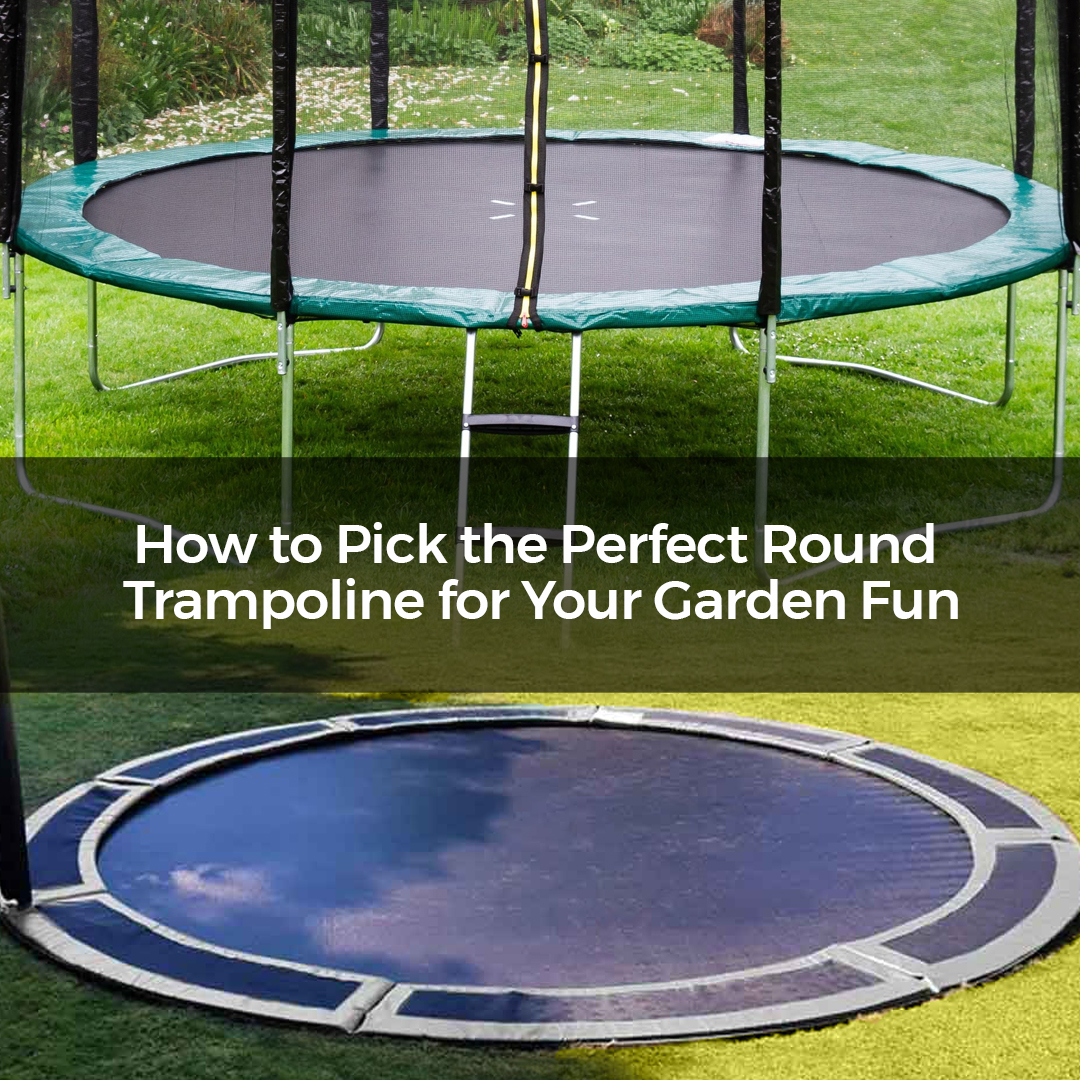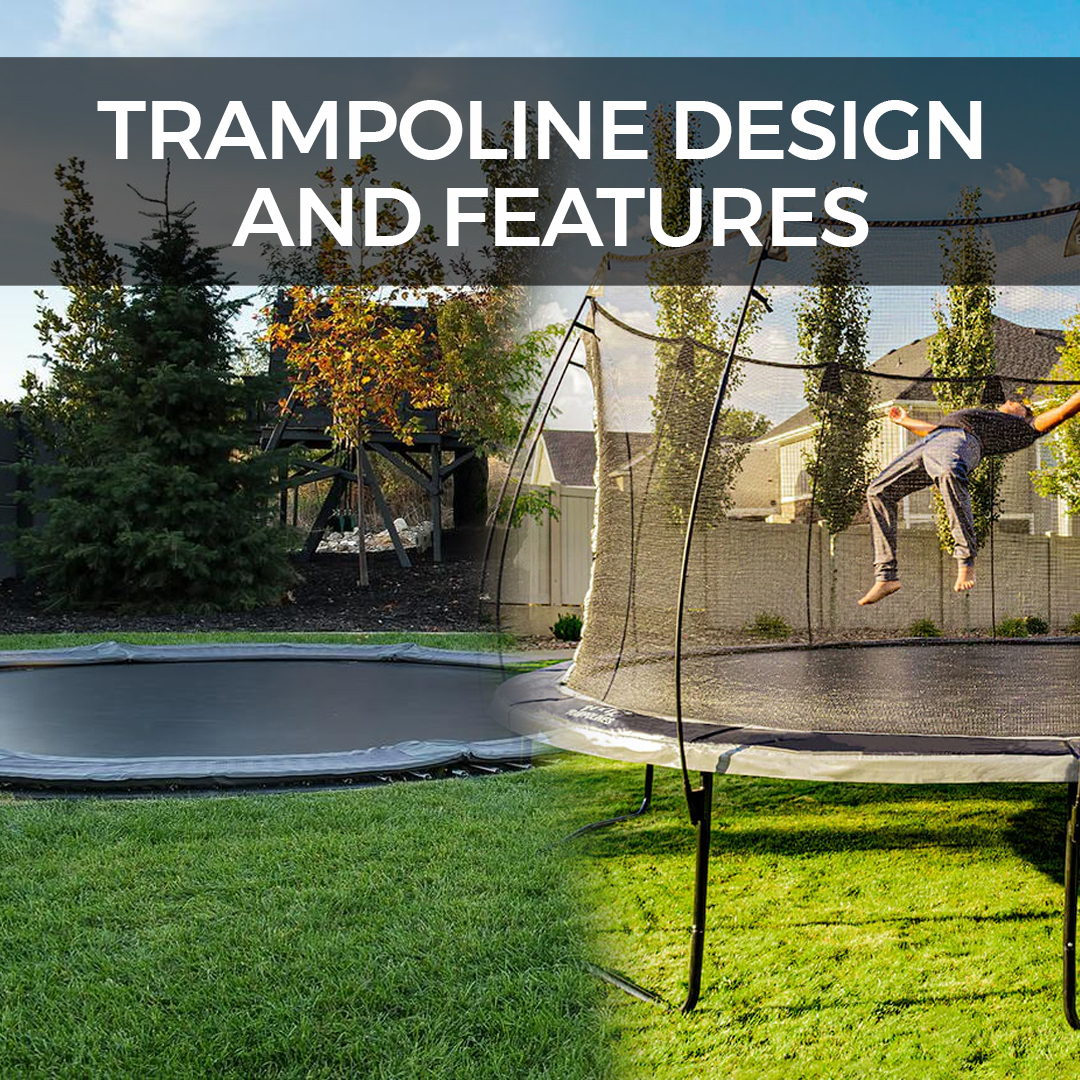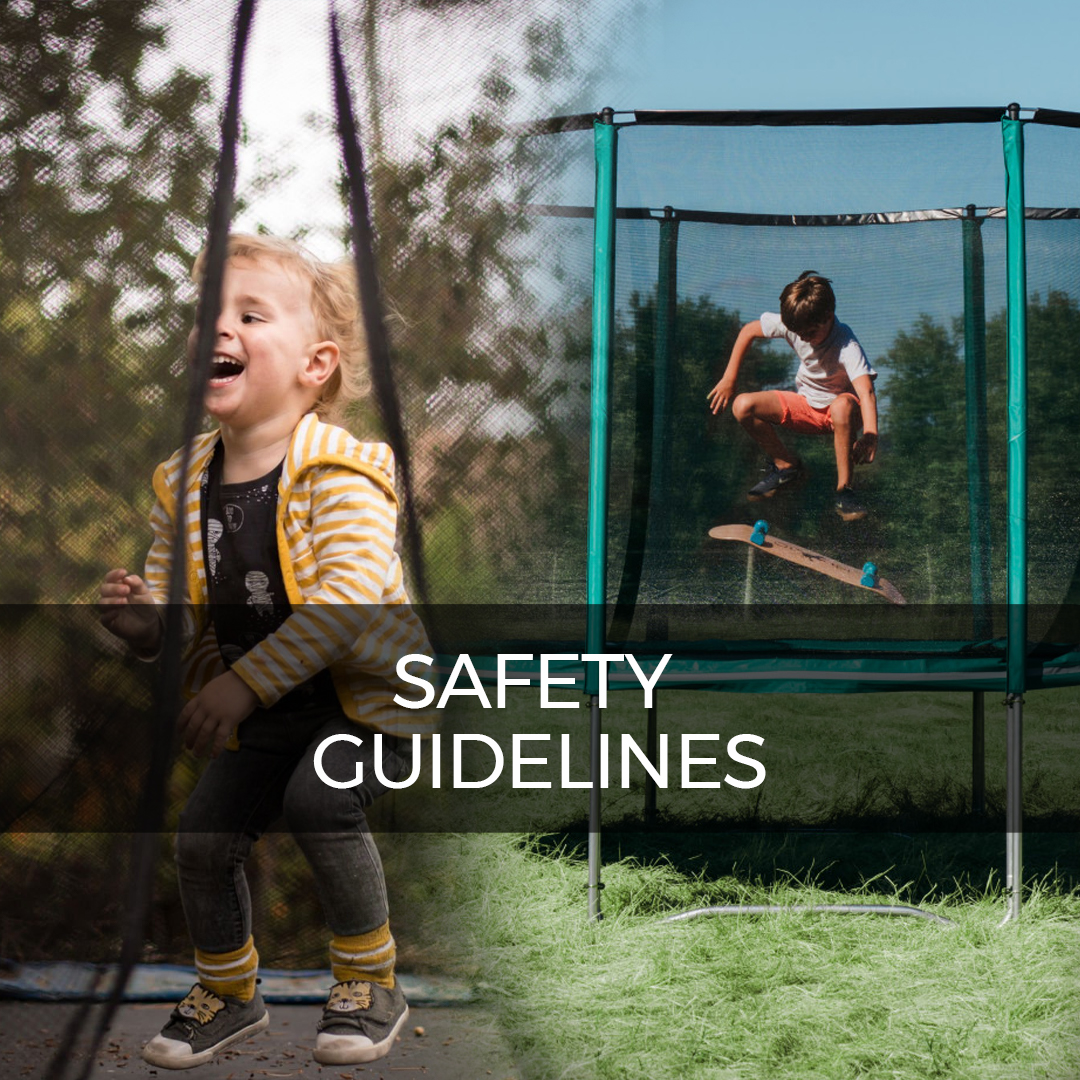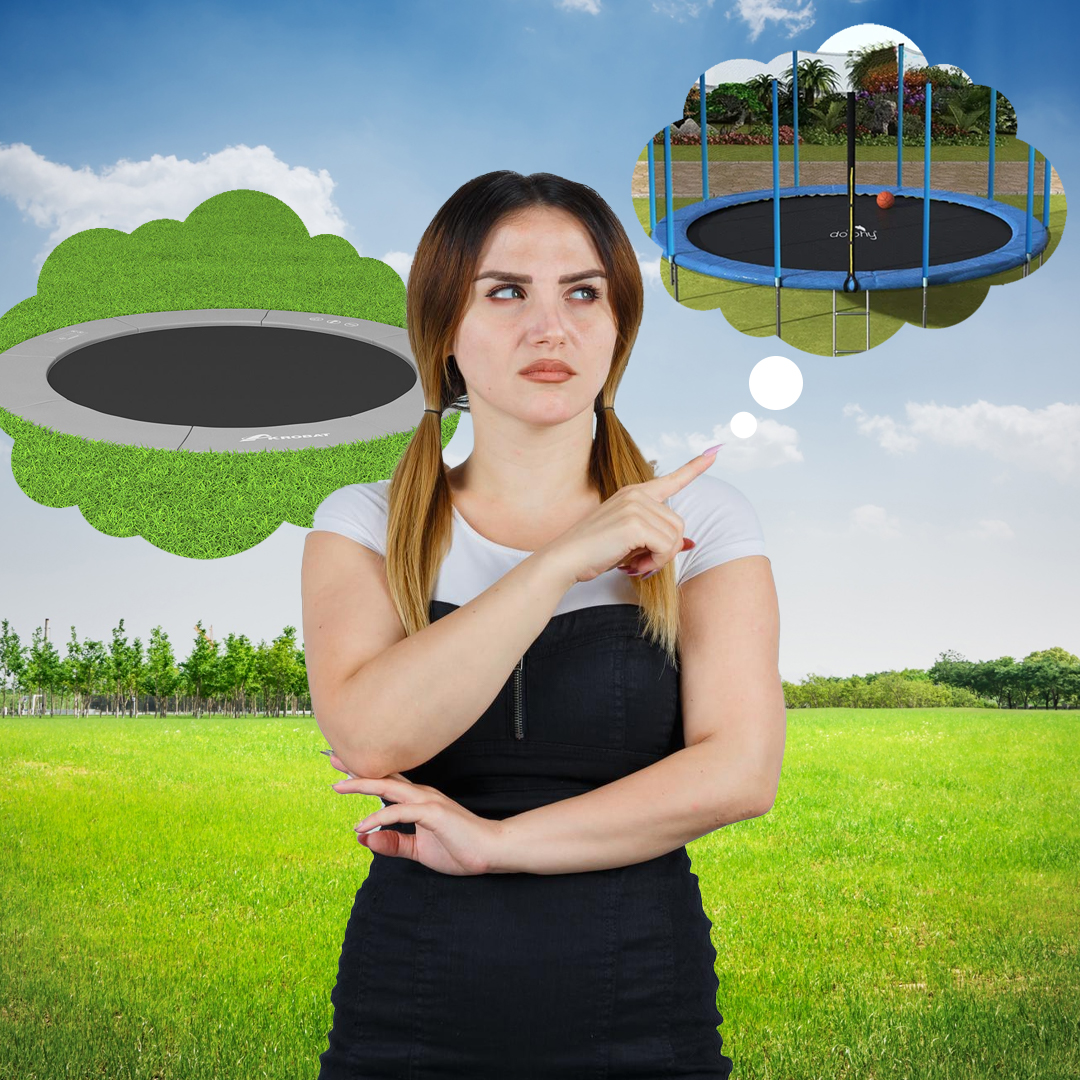
Ever thought about adding a trampoline to your garden? It’s not just about bouncing; it’s about having fun! Trampolines bring families together and make everyone smile. They’re not just for bouncing but for creating simple, happy moments in your garden.
You must be thinking why trampoline is becoming a trend in the UK. It’s not only good for your heart but also makes your muscles stronger and keeps you steady on your feet. It’s like having a blast while working out!
Round trampolines bring a special kind of happiness to your garden. Their shape means even bouncing and lots of laughter, making them the go-to choice for simple, carefree moments with family and friends.
In this guide, we’ll briefly explore round trampoline basics – size, design, springs, and safety. Stick around for quick tips on assembly and maintenance. Let’s get started!
Consider Your Garden Space

To pick the right round trampoline, evaluate your garden dimensions. Follow these steps to ensure your garden can handle your desired trampoline size.
Measure the Diameter
Use a reliable measuring tape to find the horizontal distance from one side of the chosen trampoline spot to the other. Note down this measurement accurately—it’s essential for selecting the right trampoline size.
Note the Width
Besides measuring the diameter, check the width of the available space. Measure the horizontal distance from the front to the back of the intended trampoline site. Ensure the width measurement is consistent throughout to maintain stability and safety.
Observe Surrounding Features
Take note of existing features like flower beds or shrubs in your garden. These elements can affect trampoline placement. Consider how they can be integrated or temporarily moved to optimise the trampoline space.
Check for Obstructions
Identify potential obstructions like trees, fences, or walls near the trampoline area. Clear the space around the trampoline to ensure safety and an uninterrupted bouncing experience.
Determine The Right Size
A round trampoline is a fun addition to any garden, but choosing the right size for your space and needs is essential.
When deciding on a diameter, consider who will use the trampoline and how much room you have. A 12 to 14 ft trampoline is perfect for recreational bouncing with friends or family. If you have a smaller garden or want a trampoline for kids, an 8 to 10ft option may suit you better.
Also, consider the maximum user weight. Most 10 to 16ft round trampolines can hold 200 to 450 pounds. But if you want a trampoline for exercise or recreational use by adults, look for one with a minimum weight limit of 400 to 500 pounds to be safe. Another variety of trampoline, available in varoud sizes are in ground round trampoline.
- An 8ft trampoline is suitable for small children, with a max weight of around 100-200 lbs.
- A 12ft trampoline is best for teens, with a max weight of 200-350 lbs
- A 14ft trampoline is suitable for recreational use by teens and adults, with a max weight of 350-500 lbs
So before you buy, measure your available space and think about who will be bouncing. Getting the right size trampoline for your needs will ensure you have years of enjoyable and safe bouncing fun. After all, the perfect trampoline fits your garden and suits the people using it.
Trampoline Design and Features

When choosing a round trampoline, the design and features are important considerations. The frame provides the foundation, so look for sturdy metal like galvanised steel or aluminium that is rust-resistant and built to last. Check reviews to determine how durable the frame and springs are.
Safety enclosures and padding are must-haves. An enclosure netting surrounds the jumping mat and prevents falls off the trampoline. Look for a high-quality net with fine mesh securely attached to poles. Thick padding that covers the springs, frame and hard edges protects from bumps and bruises. Weather-resistant materials are essential for trampolines that remain outdoors. A waterproof jumping mat, UV-resistant netting and rust-proof springs ensure your trampoline can withstand the elements.
Consider the jumping mat (also called the bounce mat). Look for a mat made of heavy-duty polypropylene mesh that provides an ideal bounce and lasts longer. Round trampolines typically have either 72 or 96-galvanised steel springs. More springs mean a more extensive, softer bounce area.
With the variety of trampolines on the market, evaluating the design, features, and quality will help you pick the perfect, long-lasting trampoline for fun-filled summers in your garden.
Spring Quality and Bounce

The springs are the backbone of your trampoline. They provide the bounce that makes jumping on a trampoline so much fun. When shopping for a round trampoline, pay close attention to the quality and number of springs.
Spring Quality
Higher-quality springs made of galvanised steel will last longer and provide a better, more responsive bounce. Cheaper springs can become misshapen or rust over time, reducing performance. For the best bounce, look for springs at least 7 inches long for a 12ft round trampoline and longer for larger sizes. Springs with a thicker gauge (lower gauge number) will also be more durable. Replacement of springs and other parts can be tricky, so it’s better to measure your trampoline and then choose the right set of parts.
Spring Count
More springs mean a tighter, more even bed surface and a higher, more powerful bounce. Generally, you want at least 6 springs per 1 foot of trampoline diameter. So, for a 12ft trampoline, aim for 72-96 springs or more. The more springs, the better, as long as they are appropriately spaced apart. Too many springs too close together won’t provide any benefit.
The number and quality of springs significantly impact how high you’ll bounce, how even and responsive the mat surface will be, and how long your trampoline will last. For the bounciest, most durable trampoline that will provide years of jumping fun, invest in a model with galvanised steel springs, at least 7 inches long for a 12ft size, and as many quality springs as possible while maintaining proper spring spacing. The springier and tighter the mat surface, the more lift and power you’ll experience with every bounce.
Easy Assembly and Maintenance
Putting together a trampoline and keeping it in good shape over the years doesn’t have to be complicated. Choosing a model with a straightforward assembly and built to last will make maintenance almost effortless. Setting up a ground enclosed round trampoline is quite different.
Easy Assembly
Opt for a trampoline designed with convenience in mind. Look for:
- Pre-assembled poles, nets and pads – Fewer parts mean less time struggling with instructions.
- Diagrams and written steps should be straightforward.
- All necessary tools included – You shouldn’t have to search the garage for specific wrenches or screwdrivers. Everything should be in the box.
- Choose a model where the springs and mat can be attached from the ground, so you’re not balancing bars and wrestling with weight overhead.
Routine Maintenance
To maximise the life of your trampoline and keep jumpers safe, perform regular checks and upkeep:
- Tighten any loosened screws, bolts or netting at least once a month during peak season.
- Inspect the springs, mat, safety pads and net for any tears, holes or damage before each use. Replace damaged parts immediately.
- Lubricate the springs yearly with a waterproof grease or oil spray to prevent rusting and squeaking.
- Brush away any debris on the net or mat. Built-up leaves and dirt can be slippery underfoot.
- Cover the trampoline when not in use to protect it from weathering. A waterproof cover can help prevent mould or mildew growth.
- Consider taking the net down in winter if the snow load is a concern in your area. Store the netting in a dry place until the spring.
Following these tips for fuss-free setup and consistent maintenance, your round trampoline should provide fun for many summers. By choosing a model built to last and giving it the care it needs, you’ll jump for joy at how easy it can be.
Safety Guidelines

Safe trampoline use is essential, especially if you have kids. Following these guidelines will help prevent injury for jumpers of all ages:
Proper Supervision
Never leave children unsupervised on the trampoline. An adult should always be present to spot jumpers and ensure safety rules are followed.
Provide clear rules for safe jumping before letting kids on the trampoline. Enforce a “one jumper at a time” rule and make sure they jump in the centre of the mat. No flips, somersaults or rough play should be allowed.
Safety Padding
Safety padding covers the springs and frame, preventing jumpers from landing on hard surfaces. High-quality padding should completely enclose the springs and protect the structure. You should also know, why trampoline socks are a must. Replace worn or damaged pads before allowing anyone on the trampoline.
Limit the Number of Jumpers
Only allow one jumper on the trampoline at a time. Multiple jumpers, especially with a significant weight difference, can be dangerous. Collisions and uncontrolled bouncing can easily lead to sprains, fractures and other injuries.
Proper Attire
Insist that jumpers wear appropriate attire to prevent injury. Bare feet are best, avoiding shoes, jewellery and glasses. Long pants and shirts will prevent scrapes. In cooler weather, gloves, hats and layers may be necessary.
Following these practical safety guidelines and properly supervising trampoline use will ensure fun for the whole family while avoiding unnecessary risk of harm. Safe jumping!
Conclusion
So there you have the essential tips for finding a quality round trampoline that will provide years of bouncing fun for you and your family. By focusing on size, safety, and durability, you’ll end up with a trampoline that ticks all the boxes. Once you’ve made your purchase, all that’s left to do is find the perfect spot in your garden, bounce, and enjoy the thrill of somersaulting high up into the air on a sunny afternoon. The simple pleasures in life, right? Get out there and rediscover your inner child – you know you want to! Happy bouncing and many hours of fun to you.


